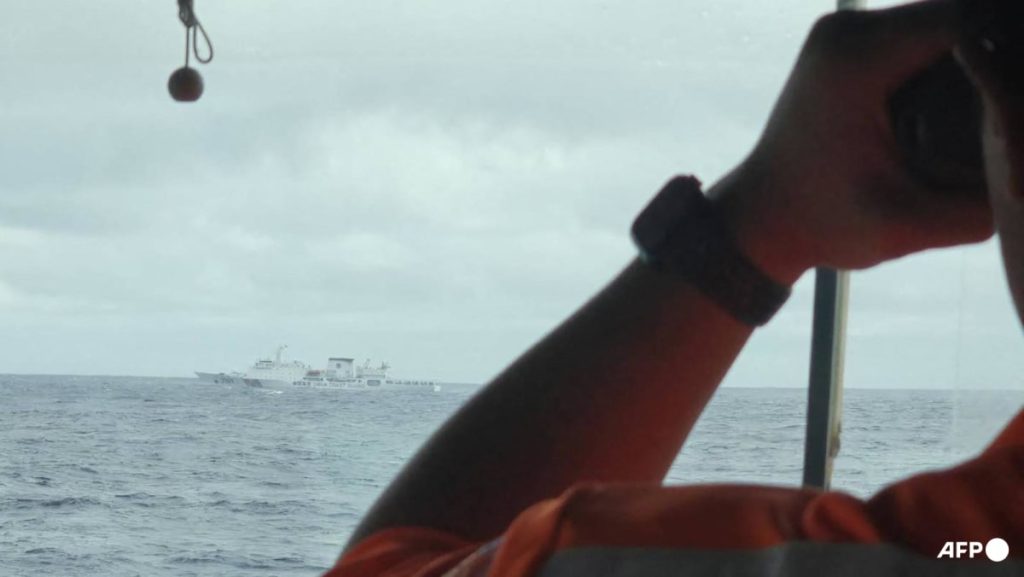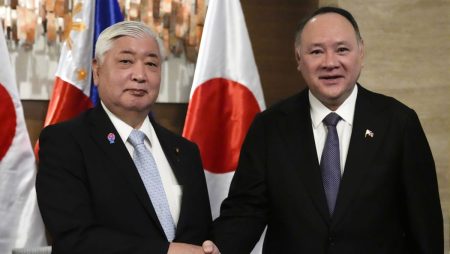The recent naval deployments by the People’s Republic of China (PRC) in the East and South China Seas have sparked regional concern and international scrutiny. While Taiwan has characterized these deployments as the most significant in nearly three decades, a US military official, speaking anonymously, offered a different perspective. The official acknowledged the elevated level of PRC military activity but stated that it aligns with patterns observed during previous large-scale exercises. This assessment diverges from Taiwan’s alarm, suggesting a nuanced interpretation of the situation. The official explicitly stated that the US does not view the deployments as a direct response to Taiwanese Vice President Lai Ching-te’s recent transit through the US, which included stops in Hawaii and Guam. Instead, they framed the activity within a broader context of increased PRC military posturing and exercises over the past several years. This framing emphasizes a continuing trend rather than a specific reaction to Lai’s trip.
The PRC’s military has not officially commented on the deployments or confirmed the existence of any exercises. This lack of official acknowledgment from Beijing adds a layer of ambiguity to the situation. While Taiwan has expressed alarm, the US official’s assessment introduces a degree of measured observation, separating the current activity from a direct response to Lai’s transit. The absence of confirmation from Beijing allows for various interpretations and adds to the complexity of understanding the PRC’s intentions. It’s important to acknowledge the different perspectives on these deployments – Taiwan’s heightened concern versus the US assessment of consistency with past large-scale exercises – and to await further information or official statements from the PRC.
The timing of the deployments shortly after Lai Ching-te’s transit through the US raises questions about potential connections. Lai, a leading candidate in Taiwan’s upcoming presidential election, is known for his pro-independence stance, a position that invariably draws scrutiny from Beijing. China considers Taiwan a breakaway province and vehemently opposes any actions suggesting Taiwanese sovereignty. While the US official denied a direct link between the deployments and Lai’s trip, the timing inevitably fuels speculation. The US, while adhering to its “One China” policy, maintains unofficial relations with Taiwan and provides it with defensive capabilities, a delicate balancing act that often irritates Beijing.
The US official, while downplaying the direct link to Lai’s transit, did characterize the increased PRC military activity as destabilizing and potentially escalatory. This underscores the underlying tensions in the region and the inherent risk associated with increased military posturing. The East and South China Seas are strategically important waterways, and increased military presence by any power raises concerns about potential miscalculations or unintended escalation. The US official’s statement highlights the need for clear communication and de-escalation measures to mitigate risks in the region. The characterization of these actions as “destabilizing” reflects a concern for the broader regional security implications.
The contrasting perspectives on the significance of the PRC naval deployments – Taiwan’s alarm versus the US’s more measured assessment – highlight the complexities of interpreting military activity in the region. Adding to the complexity is the lack of official confirmation or explanation from Beijing. This creates a situation where different parties can interpret the same events through different lenses, leading to varying levels of concern. This discrepancy underscores the importance of relying on verified information and avoiding hasty conclusions based on incomplete or potentially biased reporting. It also highlights the critical need for open communication channels between all involved parties to prevent misinterpretations and escalation.
The situation in the East and South China Seas requires careful monitoring and analysis. The increased PRC military activity, regardless of its intended purpose, has the potential to heighten tensions and increase the risk of miscalculation. The differing perspectives from Taiwan and the US underscore the importance of nuanced understanding and the need for clear communication. The lack of official comment from Beijing further complicates the situation, making it essential to gather information from multiple sources and avoid drawing premature conclusions. The focus should remain on promoting stability and preventing escalation in a region crucial for global security and economic prosperity. The long-term goal should be to establish mechanisms for dialogue and cooperation that can address the underlying issues and reduce the risk of conflict in the East and South China Seas.










